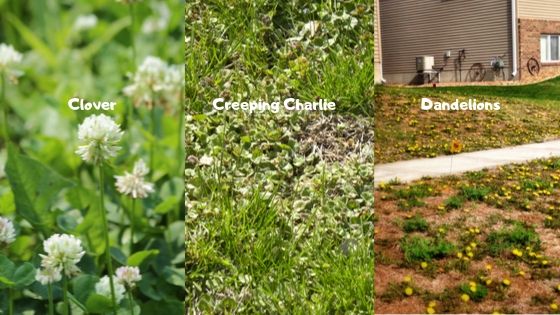The fall is a great time to improve our lawns. We have now passed the correct timing for overseeding lawns, but there are other improvements we can still make. Controlling perennial broadleaf weeds and winter annual weeds can be done in October and fertilizers may be applied if necessary.
Broadleaf weeds

Perennial broadleaf weeds including dandelions, creeping Charlie or ground ivy, and clover are best controlled in the fall once the weeds have begun their preparations for winter. In the fall, these perennial weeds will move sugars that they use for energy from the above ground portions of the plant down into the roots to store them for next spring. If they are sprayed during this phase of their lifecycle, they are more likely to take that herbicide down into the roots to be more effective than if done in the spring. Spray these weeds with a 2,4-D product 2 or 3 times from late September through the end of October. Wait to spray after temperatures consistently drop to below 80 degrees so the herbicide doesn’t volatilize in hot, humid weather.
Weedy grasses

The fall is not the time to worry about or treat for summer annual weeds such as crabgrass. Those plants that are still alive will die with the first frost and the seed will not germinate until next spring when the weather warms back up again. However, you can treat now for winter annual weeds such as henbit and speedwell. Once they have germinated this fall you can use a 2,4-D product, which can be applied as a late October application both for the winter annual weeds and for perennial broadleaf weeds.
Using pesticides correctly
Remember, when using pesticides always be careful and apply pesticides according to the label. Any material used to maintain a landscape, including fertilizer, sand, or pesticides, can end up in the storm sewer and lead to pollution of lakes, rivers, and streams. In the same manner, even our grass clippings and leaves can pollute our water supply. There are ways to manage our landscapes while reducing water pollution.
The following will help when managing our lawns this fall:
- Any fertilizers, pesticides, and grass clippings should be swept back onto the landscape. Using a leaf blower will work as well. The idea is to keep these items on plant material rather than on the hardscape that leads easily to the storm sewer.
- Raking up leaves in the fall will also help reduce the amount of leaf debris that ends up in water.
- Check your sprayers before using to ensure they are properly calibrated and the nozzles are not clogged.
- Thatch layers in the lawn can become a natural barrier to prevent infiltration. Aerate the lawn to reduce the thatch layer to allow lawn products to infiltrate their intended areas.
Fertilizer
As for fertilizer applications, the fall fertilization is the most important fertilizer application for a lawn. However, fall fertilization recommendations have changed over the past couple of years. For a lawn, a Labor Day to mid-September application of slow release fertilizer is still recommended. Apply a granule with 50% slow release nitrogen or less. If additional nitrogen fertilizer is required later in the fall, use a product with a quick release nitrogen in mid-October. We used to recommend Halloween or later for the second fertilizer application and we thought two applications were necessary. New research is showing us that a second application of nitrogen fertilizer may not even be necessary, but if it is, we should move the timing up to more like Columbus Day rather than the typical Halloween time frame. This information is from Bill Kreuser, Assistant Professor and Turfgrass Extension Specialist from the University of Nebraska-Lincoln.

